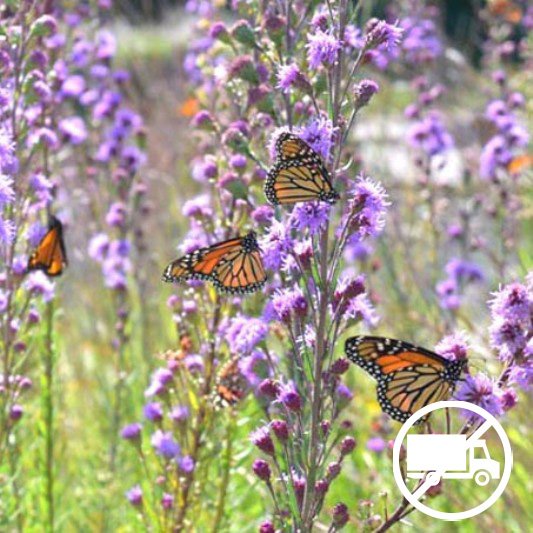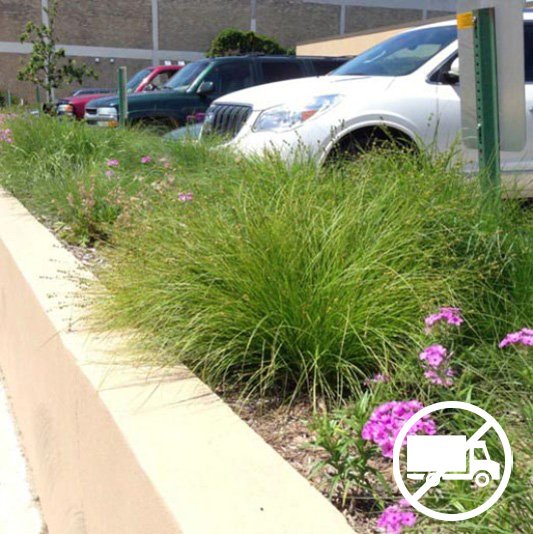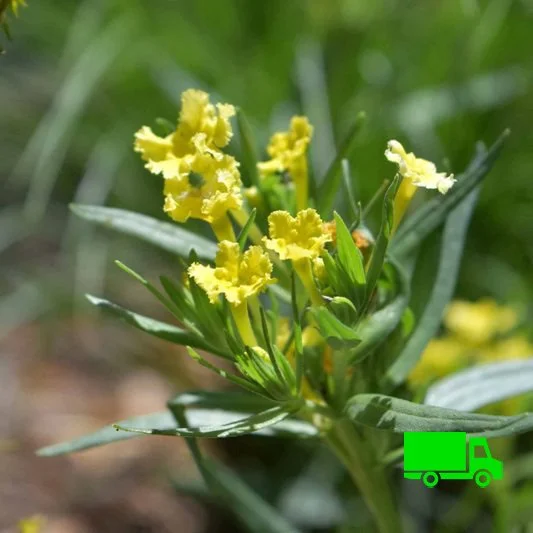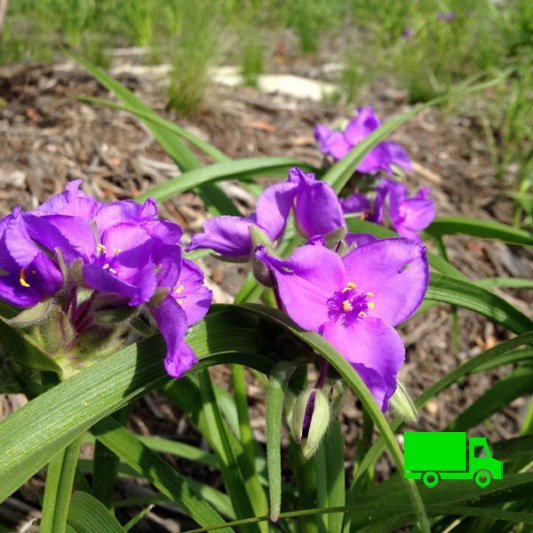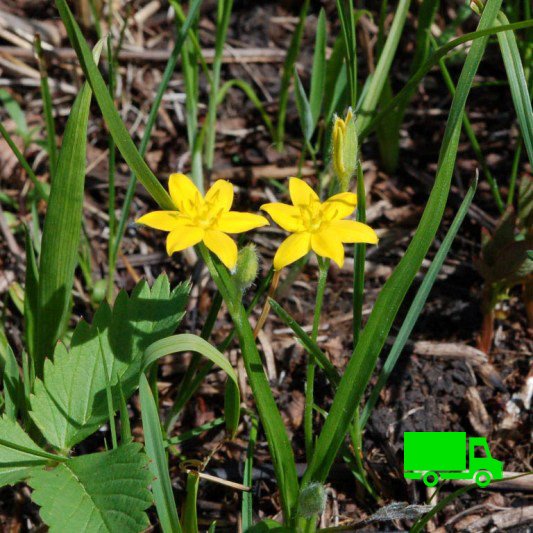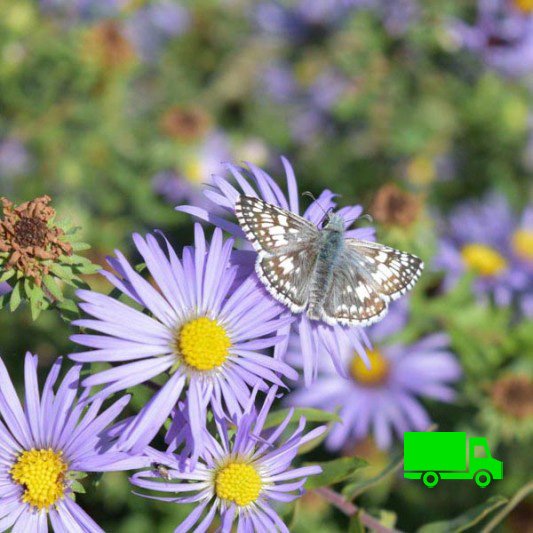
What should I plant?
A Beginner’s Guide to Native Plants
+ What is a native plant?
The plants that grew in our landscapes before the cities, before the farms, before civilization—those are “native” plants. In the Midwest, it was mostly prairie with perennial grasses and flowers. Some areas had forest with ground-level grasses and flowers. Lakes had aquatic and shoreline plants, and wetlands had plants that could handle wet and sometimes dry conditions.
+ Why are native plants important?
Plants that are native to your area are great garden plants because they have adapted to local conditions. They support the birds, bees, butterflies, and other insects that need the plants to survive—and that the plants need for pollination. Without native plants, many of the birds and insects in America would vanish, because the plants that have replaced them—plants we’ve brought in from the rest of the world—don’t support all of their food and habitat needs. Many songbirds are dependent on native prairie flowers and grasses for food (seeds and insects that feed on native plants) and habitat (nests). Monarch butterflies are totally dependent on milkweed for caterpillar food, and many insects have that exact same kind of relationship with other flowers or grasses. Goldfinches eat the seeds of coneflowers. Painted lady caterpillars eat the leaves of pussytoe flowers, and skipper butterflies need specific grasses and sedges for caterpillar food. If you have these plants in your garden, you will attract and support different butterflies, birds, and insects. The more native plants you have, the more you will support!
+ What should I plant?
Garden basics: Most native plants are a lot like the plants you already have planted in your gardens: they are perennials come back every year. There are plants that like sunny spots and plants that like shade. There are many “tame” native plants that stay in clumps and don’t spread very much and there are some native plants that spread a lot—sometimes you want a tidy garden, and sometimes you want plants that can out-compete weeds in big pollinator gardens and survive being planted in restorations.
Treat native plants the same way you’d treat a traditional garden: add some mulch, water them for a few weeks after planting, trim them back once a year (or don’t), pull the weeds, and watch them grow bigger year after year. The closer you plant them, the more the garden will fill in, and the less mulch you’ll need in future years.
Plant short plants on borders and put tall plants in the middle. Do you want a garden with shorter, tidy plants that don't spread much, or more of a pollinator jungle with taller, spreading plants?. You might want to choose plants that fit into one style of garden or the other (on our plant pages, we have a Detail on how a plant "Spreads: ex. not much, a lot, by seed, by roots, etc").
Plant at least a few of each species of flower or plant for a big visual impact (drifts of plants). Each flower species blooms for a month or two--make sure you have flowers that bloom in the spring, summer, and fall. Try to put flowers that bloom at the same time next to each other for complimentary colors.
In May, the spring flowers are blooming: Prairie Smoke (red), Blue Eyed Grass (blue), and Star Sedge (green). These are very short plants that are good next to borders or sidewalks.
In August, the late summer flowers are blooming: Prairie Onion (white/pink), Orange Coneflower (yellow), Butterfly Milkweed (orange). Clump grasses fill in the gaps and smooth out the garden: Blue Grama Grass (short border grass), and Star Sedge (short border sedge).
In July, the summer flowers are blooming: Butterfly Milkweed (orange), Purple Prairie Clover (pink), Prairie Phlox (pink). The taller flowers start shooting up—they are are placed in the middle so they don’t flop onto the sidewalk: Meadow Blazing Star (tall spikes; will bloom in Aug/Sept).
Finally, in early September, the tall Meadow Blazing Star flowers bloom (pink) and attract swarms of monarchs. The medium height grasses put out seed heads: Little Bluestem (bronze) and Prairie Dropseed (light, airy seed heads).
+ Native plants for sun
We always recommend a few showcase plants that show the value of native plants. They like sunny areas and they are more than worthy of a sunny front yard. Meadow Blazing Star attracts a ton of monarchs for its nectar in late August and early September. Butterfly Milkweed is a short milkweed that stays in clumps and doesn’t spread by roots like the common milkweed you’re familiar with. Put them together in a sunny garden and you’ll find monarch caterpillars in the summer and attract swarms of monarch butterflies in August! It's worth noting that the more you plant, the more pollinators you’ll attract. If you plant one of each, you’ll get a few butterflies. If you plant ten of each, you’ll get a dozen monarchs. If you plant hundreds of Meadow Blazing Star flowers, you’ll get hundreds of butterflies! It doesn’t matter if you are in the city or the country—they will find your garden. Prairie Smoke is a perfect flower for borders: it gets only 10 inches tall and it blooms in very early spring.
+ Native plants for shade
There are some great native flowers that like shade gardens and are good companions to the hostas and other plants you might already have. Jacob’s Ladder is a short, clump-forming flower with nice foliage and soft blue flowers in spring. Cardinal Flower has deep red flowers that attract hummingbirds in summer. It doesn’t like very dry soil so make sure you plant it in black soil with mulch. Wild Blue Phlox has short blue flowers in spring and looks nice planted with sedges (sedges are like grasses).
+ Sedges and grasses
Sedges and grasses are an important part of any garden. They support insects and birds in various ways: caterpillars of skipper butterflies eat the leaves, birds eat the seeds, and other insects eat the leaves, too (and birds eat the insects that eat the plants!).
Their fine leaves soften the garden and tie it together. Flowers are like pictures and paintings on a wall, and grasses are like the wall paint—too many wall decorations make a house look too busy, and too much empty wall space makes a house feel lackluster. A balance is important.
There are a few popular grasses and sedges for sunny gardens. Prairie Dropseed forms round clumps with very fine leaves. It looks amazing planted throughout a garden or in big masses. Little Bluestem has blueish-silver leaves in the summer that turn into an upright column of bronze in the fall and winter. Star Sedge starts greening up in April and adds color to a garden while most plants are still dormant. All three of these form round clumps and do not spread underground. Star Sedge and Prairie Dropseed rarely even spread by seed, making them very friendly garden companions.
+ Sedges and grasses for shade
For shade gardens, sedges are the go-to plants. In pristine forests of the Midwest, sedges often carpet the forest floor, mingling with shade flowers that often bloom in the spring before the trees leaf out. Ivory Sedge is extremely short at just about 8” tall. If you plant it close together—about 8-10” apart—it will grow together to form a fine mat. Keep in mind, however, that there are few plants that can handle the foot traffic that normal lawn grass can. Rosy Sedge form short, 12” tall clumps. It grows well with clump-forming shade flowers like Jacob’s Ladder and Wild Blue Phlox. Pennsylvania Sedge is one of the best options alternative lawns. It spreads by underground roots to form dense mats. Plant it 12-16”” apart to let it grow into a solid mat in a few years. Plant it with other aggressive shade flowers like Wild Geranium and Zig Zag Goldenrod; it can out-compete the less-aggressive shade flowers.



